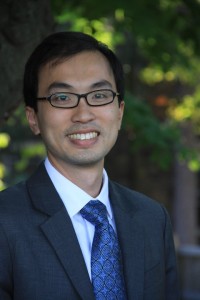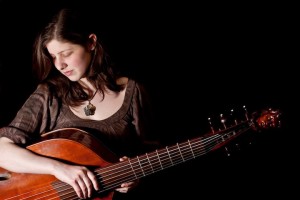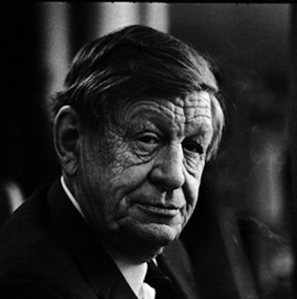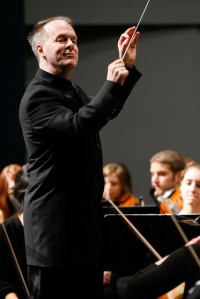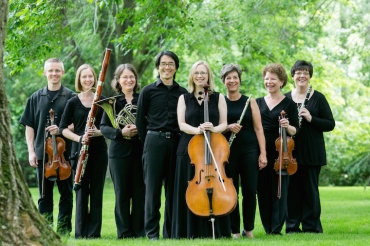The Well-Tempered Ear
What are the best classical music festivals this summer?
6 Comments
YOU CAN HELP THE EAR. IF YOU LIKE WHAT YOU READ, PLEASE SUBSCRIBE. IF YOU LIKE A SPECIFIC BLOG POST, PLEASE SPREAD THE WORD. FORWARD A LINK TO IT TO FRIENDS AND FAMILY. SHARE IT or TAG IT (not just “Like” it) ON FACEBOOK.
By Jacob Stockinger
Memorial Day 2024 will be celebrated his weekend.
In addition to remembering veterans, the holiday is the unofficial start of summer in the U.S. and brings picnics, barbecues, camping and travels.
It also brings music festivals of all kinds — pop, rock, jazz, folk, blues, ethnic and hip-hop.
So this weekend seems like a good time to pass along dozens of recommendations for major classical music festivals that you can attend in the U.S., the UK, Canada and Europe. Many of them are held outdoors — in tents, amphitheaters, sheds, bowls and shells at the summer residencies of major arts organizations such as symphony orchestras. (Below is the Tahoe Pavilion in Nevada.)
Curiously, I have not seen any classical music festivals listed for Asia, which has been experiencing a renaissance in performing and listening to Western classical music — especially in China, Taiwan, Japan and South Korea.
Anyway, here are links to the stories about summer festivals that were selected by critics for classical-music.com thanks to the BBCMusic Magazine.
Even if you can’t attend them it can be a lot of vicarious fun to check them out — much like reading cookbooks, recipes and travelogues.
It can be very informative to check out the genres (chamber music, orchestra and opera; old music and new), the programs, the composers and the performers as well as the venues — especially since the listings have many links that take you to more details and YouTube videos about those same items. (Below is a photo by Zach Mahone of the outdoor concert venue in Vail, Colorado)
In the United States and Canada:
https://www.classical-music.com/live-music/best-classical-music-festivals-in-usa-and-canada
In the UK including Great Britain, Australia and New Zealand:
https://www.classical-music.com/live-music/uks-best-classical-music-festivals
In Europe (see the YouTube trailer for the Edinburgh International Festival 2023 at the bottom):
https://www.classical-music.com/live-music/best-classical-music-festivals-europe-2024
And don’t forget the check out local festivals that don’t usually get included in national or international listings.
Do you have any festivals — local, regional, national and international — to recommend?
The Ear wants to hear.
Tags: #BlogPost, #BlogPosting, #FacebookPost, #FacebookPosting, #YouTubevideo, 2023, 2024, amphitheater, Android, app, Apple, Apple OS, Arts, Asia, asian, audience, Australia, Bach, barbecue, Baroque, BBC, BBC Music Magazine, Beethoven, Bing, blues, bowls, camp, camping, Canada, Cello, Chamber music, China, Chinese, choral music, cities, city, Classical music, Classical-music.com, classicalmusic, Colorado, composer, Concert, concerto, cookbook, critic, duckduckgo, ear, Early music, Edinburgh, ethnic, Europe, European, Facebook, festivals, folk, Folk music, Foxfire, Google, Google Alert, Google Alerts, Google Search, Great Britain, hear, hip-hop, Holiday, include, international, Jacob Stockinger, Japan, Japanese, Jazz, Johann Sebastian Bach, Korea, Korean, liberty, link, listing, live music, local, Ludwig van Beethoven, Madison, Madison Symphony Orchestra, Memorial Day, Microsoft, mopuntains, Mozart, Music, national, Nevada, new, New Zealand, ok, old, open air, opera, Orchestra, organization, OS, outdoors, Overture Center, People's Republic of China, performer, Piano, picnic, pop, PRC, rap, read, recipe, recommend, regional, remember, remembering, Renaissance, Rock, Safari, Scotland, share, shed, shell, singer, Singing, Sonata, South Korea, South Korean, start, subscribe, summer, symphony, tag, Tahoe, Taiwan, Taiwanese, tent, The Ear, travel, travelogue, Twitter, UK, United States, University of Wisconsin-Madison School of Music, University of Wisconsin–Madison, unofficial, USA, Vail, venue, veterans, vicarious, Viola, Violin, vocal music, Wales, Well-Tempered, Well-tempered Ear, welltempered, Western, Wisconsin, Wolfgang Amadeus Mozart, WordPress, Wordpress.com, Writer, X, you, YouTube
YOU MUST HEAR THIS: No piece captures the mixed emotions of Memorial Day better than Charles Ives’ “Decoration Day”
3 Comments
PLEASE HELP THE EAR. IF YOU LIKE A CERTAIN BLOG POST, SPREAD THE WORD. FORWARD A LINK TO IT OR, SHARE IT or TAG IT (not just “Like” it) ON FACEBOOK. Performers can use the extra exposure to draw potential audience members to an event. And you might even attract new readers and subscribers to the blog.
By Jacob Stockinger
Today is Memorial Day, 2022.
It is the annual holiday to remember those who died in military service to the country. (Below are flags placed each year at the tombstones in Arlington National Cemetery in Virginia.)
If you want to honor survivors and current service members, that would be Veterans Day on Nov. 11.
All weekend long the radio has been playing music and the television has been showing war movies.
A lot of the music is familiar and repeated every year: Sousa marches and Morton Gould suites, elegies by Gustav Mahler, Samuel Barber, Aaron Copland and Leonard Bernstein; requiems by Mozart and Fauré; a hymn by John Williams and other movie scores. This year has also seen the playlist include rediscovered works of homage by African-American composers such as William Grant Still.
But only this year did The Ear finally hear — thanks to Wisconsin Public Radio — the one piece that, to his mind, best captures Memorial Day with its blending of consonance and dissonance, its mix of major and major keys, of familiar or “found” music and original music.
It is called, simply, “Decoration Day” and it was composed in 1912 — but not published until 1989 — by the 20th-century iconoclastic and early modernist American composer Charles Ives (below, 1874-1954). It ended up as part of a work the composer called “A Symphony: New England Hollidays.”
See if you agree with The Ear.
Listen to the 8-minute performance by “The President’s Own” United States Marine Band in the YouTube video at the bottom.
Listen to the deep anguish and and sense of loss conveyed in the opening, when a solemn remembrance procession goes to a cemetery to plant flags and lay flowers and wreaths to “decorate” the graves of the fallen.
Listen carefully and you will hear a faint version of “Taps” and ringing church bells in the atmospheric music.
Then as so often happens in reality, life suddenly intrudes in the form of a celebration by a loud marching brass band as it leaves the cemetery for the celebratory marches, picnics and fireworks.
But at the end, the darkness briefly returns. The sense of loss lingers long after the actual death and long after the holiday has been celebrated.
There is no closure.
Just resignation.
Just living with loss.
Here is the background from Wikipedia about how the holiday started as Decoration Day after the Civil War and when it evolved into Memorial Day in 1970: https://en.wikipedia.org/wiki/Memorial_Day
And here is biographical background, with the actual sources and depictions of “Decoration Day” — just go down the page to compositions and click — about Charles Ives: https://en.wikipedia.org/wiki/Charles_Ives
Did you know and like Charles Ives’ music?
Does “Decoration Day” impress or move you?
What music most embodies Memorial Day for you?
The Ear wants to hear.
Tags: #AaronCopland, #African-AmericanComposer, #ArlingtonNationalCemetery, #BandMusic, #BlackAmericans, #BlogPost, #BlogPosting, #BrassBand, #BrassMusic, #CharlesIves, #ChurchBells, #CivilWar, #DecorationDay, #FacebookPosting, #GabrielFaure, #GustavMahler, #JacobStockinger, #JohnPhilipSousa, #JohnWilliams, #LeonardBernstein, #MajorKey, #MemorialDay, #MilitaryService, #MinorKey, #MixedEmotions, #MortonGould, #NationalPublicRadio, #NewEngland, #OrchestralMusic, #OriginalWork, #SamuelBarber, #TheEar, #ThePresident, #TheU.S., #UnitedStates, #UnitedStatesMarineBand, #USMarines, #VeteransDay, #WarMovies, #Wikipediaentry, #WilliamGrantStill, #WisconsinPublicRadio, #WolfgangAmadeusMozart, #YouTubevideo, 20th-century, 20th-century music, Aaron Copland, actual, African American, American, American Civil War, Ameriuca, anguish, annual, Arlington, Arlington National Cemetery, Arts, atmosphere, atmospheric, audience, background, band, band music, Barber, Bernstein, biographical, black, blog, bottom, brass band, brass music, celebration, celebratory, cemetery, Charles Ives, church, church bells, Civil War, Classical music, Classical Revolution, closure, compose, composer, Composition, Concert, consonance, Copland, darkness, dead, death, Decoration Day, deep, depiction, dissonance, early, Early music, Elegy, embody, emotion, evolution, evolve, Facebook, fallen, familiar, Fascebook, Faure, film, Fireworks, flag, flower, found, Gabriel Fauré, Gould, grave, Gustav Mahler, hear, Holiday, homage, honor, hymn, iconoclast, iconoclastic, impress, information, intrude, Ives, Jacob Stockinger, John Philip Sousa, John Williams, Leonard Bernstein, life, like, linger, listen, living, loss, loud, Mahler, major key, march, Marines, mark, Memorial Day, military, minor key, minute, mixed, modern, modernist, morph, Morton Gould, move, Movies, Mozart, nation, national, National Public Radio, New England, NPR, opening, orchestral, original, performance, picnic, piece, plant, playlist, post, posting, President, procession, psalm, publish, Radio, reality, rediscover, remembrance, repeat, Samuel Barber, score, sense, service, show, solemn, soundtrack, source, sources, Sousa, Still, suddenly, Suite, symphony, Taps, Television, thanks, The Ear, TV, U.S., United State Marine Band, United States, veterans, Veterans Day, video, war, war movies, weekend, Wikipedia, William Grant Still, Williams, wisconsin public radio, Wolfgang Amadeus Mozart, work, wreaty, year, you, YouTube
Classical music: Sunday brings the winners’ concert of the UW Concerto and Composition Competition plus a harpsichord recital
1 Comment
IF YOU LIKE A CERTAIN BLOG POST, PLEASE SPREAD THE WORD. FORWARD A LINK TO IT OR, SHARE or TAG IT (not just “Like” it) ON FACEBOOK. Performers can use the extra exposure to draw potential audience members to an event.
By Jacob Stockinger
Two more noteworthy concerts will take place this coming Sunday, March 10.
UW-MADISON CONCERTO AND COMPOSITION COMPETITION
On Sunday night at 7:30 p.m. in Mills Hall, the annual winners’ concert of the UW-Madison Concerto and Composition Competition will take place.
The concert features the UW Symphony Orchestra (below top) under conductor Chad Hutchinson (below bottom) with four instrumentalists, one singer and one composer. All are current students at the University of Wisconsin-Madison’s Mead Witter School of Music.
Admission is $12, but free to students, children, music majors, faculty and staff.
Well-know works on the program include: Adalia Hernandez Abrego and Jiawan Zhang playing the Concerto for Two Pianos in D minor by Francis Poulenc; Richard Silvers playing the first two movements of the Violin Concerto in A minor by Antonin Dvorak; soprano Cayla Rosché singing the first and third songs of the “Four Last Songs” by Richard Strauss; and Chia-Yu Hsu playing the Concertino for Bassoon and Orchestra by Marcel Bitsch. In addition, there will be the world premiere of “Fanfare for Orchestra” by student composer Anne McAninch.
To learn more about the concert, and to see photos and videos of the performers who discuss themselves and the works they will play, see the YouTube video below and go to:
HARPSICHORD RECITAL
Earlier on Sunday afternoon is a concert that should appeal to early music fans: At 3 p.m. the First Unitarian Society of Madison, 900 University Bay Drive, will present the fifth Annual Mark Rosa Harpsichord Recital.
The performance features harpsichordist Jason J. Moy (below), with special guests bass violist Katherine Shuldiner and baroque violinist Kangwon Lee Kim.
The all-French baroque program is called “The Angel, The Devil and The Sun King: Music and Rivalry in the Court of Louis XIV” and features works by Marin Marais, Antoine Forqueray, Jacques Duphly and Jean-Philippe Rameau.
Tickets will be available at the door: $20 for general admission, $12 for seniors, students and veterans.
Moy is director of the Baroque Ensemble and a harpsichord instructor at the DePaul University School of Music. He has performed across the United States, Canada and Europe, including every Boston Early Music Festival since 2013.
One of Chicago’s most sought-after early keyboard specialists, Moy was recently named artistic director of Ars Musica Chicago. He also plays as part of the Dame Myra Hess International Concert Series at the Chicago Cultural Center. Madisonians may be familiar with his playing from his appearances with the Wisconsin Chamber Orchestra.
You can hear him discuss playing the harpsichord and talk about its modern history in the YouTube video below. For more information, go to: www.jjmoy.com
Kangwon Lee Kim (below) is a versatile violinist on both baroque and modern violins. She is familiar to Madisonians as the concertmaster and assistant artistic director of Madison Bach Musicians. She has also given recitals throughout the U.S. and in Korea, Canada, Puerto Rico, Switzerland, Norway and the Czech Republic.
Katherine Shuldiner (below) graduated from the Oberlin Conservatory in viola da gamba. She performs regularly with other early music specialists, and ensembles such as the Bach and Beethoven Experience, VOX3 Collective and the Newberry Consort. She has taught at the Whitewater and Madison Early Music Festivals. www.kateshuldiner.com
Tags: #AdaliaHernandezAbrego, #AnneMcAninch, #AntoineForqueray, #AntoninDvorak, #ArsMusicaChicago, #ArtisticDirector, #BaroqueEnsemble, #BaroqueMusic, #BassoonConcerto, #BassoonMusic, #BassViol, #BlogPost, #BlogPosting, #BostonEarlyMusicFestival, #BostonMassachusetts, #CaylaRosché, #ChadHutchinson, #ChicagoCulturalCenter, #ChicagoIllinois, #ConcertoCompetition, #CzechRepublic, #DePaulUniversity, #FacebookPost, #FacebookPosting, #FirstUnitarianSocietyofMadison, #FourLastSongs, #FrancisPoulenc, #FrenchMusic, #HarpsichordMusic, #JacquesDuphly, #Jason Moy, #JasonMoy, #Jean-PhilippeRameau, #JiawanZhang, #JohannSebastianBach, #KangwonKim, #KatherineShuldiner, #LouisXIV, #LudwigVanBeethoven, #MadisonBachMusicians, #MadisonEarlyMusicFestival, #MarcelBitsch, #MarinMarais, #MarkRosa, #MeadWitterSchoolofMusic, #ModernHistory, #MusicMajor, #MyraHess, #NewberryConsort, #OberlinConservatory, #PianoConcerto, #PuertoRico, #RichardSilvers, #RichardStrauss, #SchoolofMusic, #Sundayafternoon, #SunKing, #TheAngel, #TheDevil, #UnitedStates, #UniversityofWisconsin-Madison, #UniversityofWisconsin-Whitewater, #UWSymphonyOrchestra, #VioladaGamba, #ViolinConcerto, #WhitewaterEarlyMusicFestival, #WisconsinChamberOrchestra, #WorldPremiere, #YouTubevideo, Adalia Hernandez Abrego, admission, adult, afternoon, angel, Anne McAninch, annual, Antoine Forqueray, Antonín Dvořák, Ars Musica Chicago, Artistic director, Arts, audience, Bach, Baroque, Baroque Ensemble, bass viol, Bassoon, Beethoven, blog, Boston, Boston Early Music Festival, Canada, Cayla Rosché, Chad Hutchinson, Chamber music, Chia-Yu Hsu, Chicago, Chicago Cultural Center, children, Classical music, composer, Composition, Concert, concertino, concertmaster, concerto, conductor, court, current, Czech Republic, DePaul University, Devil, discuss, Early music, Europe, Facebook, faculty, fanfafe, First Unitarian Society of Madison, forward, Four Last Songs, Francis Poulenc, French, harpsichord, History, instrumentalist, Jacob Stockinger, Jacques Duphly, Jean-Philippe Rameau, Jiawan Zhang, Johann Sebastian Bach, Kangwon Kim, Katherine Shuldiner, Keyboard, Korea, like, lnk, Louis XIV, Ludwig van Beethoven, Madison, Madison Bach Musicians, Madison Early Music Festival, Madisonian, major, Marcel BItsch, Marin Marais, Mark Rosa, Mead Witter School of Music, modern, Music, music major, Myra Hess, Newberry Consort, Norway, noteworthy, Oberlin Conservatory, Orchestra, performer, photo, Piano, playing, post, posting, Puerto Rico, Richard Silvers, Richard Strauss, rivalry, School of Music, share, sing, singer, song, soprano, specialist, staff\, Student, students, Sun King, Sunday, Switzerland, symphony, tag, talk, teach, two-piano, U.S., United States, University of Wisconsin-Madison School of Music, University of Wisconsin-Whitewater, University of Wisconsin–Madison, UW Symphony Orchestra, UW-Madison, Veteran, veterans, video, viola da gamba, Violin, WaterwaterWisconsin, well-known, Whitewater Early Music Festival, Wisconsin, Wisconsin Chamber Orchestra, word, work, world premiere, YouTube, Zhang
Classical music: This weekend, the Madison Symphony Orchestra celebrates the legacy and works of Leonard Bernstein
Leave a Comment
IF YOU LIKE A CERTAIN BLOG POST, PLEASE FORWARD A LINK TO IT OR SHARE IT (not just “Like” it) ON FACEBOOK. Performers can use the extra exposure to draw potential audience members to an event.
By Jacob Stockinger
This coming weekend, Leonard Bernstein (below, in a photo by Jack Mitchell) will be remembered, honored and celebrated by his friend and Madison Symphony Orchestra music director John DeMain in a “Remembering Lenny” concert that explores Bernstein’s musical contributions as an American composer and conductor.
Original works by Bernstein will be performed by the MSO on the first half of the concert. The MSO starts with the Overture to Candide, then moves on to On The Town, and, finally, performs his Symphony No. 2 “The Age of Anxiety,” featuring Van Cliburn Competition bronze medal winner and UW-Madison pianist Christopher Taylor.
The second half of the program features Ludwig van Beethoven’s Symphony No. 7, the last work that Bernstein (1918-1990) ever conducted during a concert at the summer Tanglewood Festival of the Boston Symphony Orchestra.
Performances will be held in Overture Hall, 201 State Street, on this Friday night, Nov. 9, at 7:30 p.m.; this Saturday night, Nov. 10, at 8 p.m.; and this Sunday afternoon, Nov. 11, at 2:30 p.m. Ticket information is below.
Says DeMain (below, in a photo by Greg Anderson): “To have my 25th anniversary with the MSO coincide with the 100th anniversary of Leonard Bernstein’s birth is special for me personally because of the unique opportunities I had to work with this great American musician.”
DeMain, who premiered Bernstein’s opera “A Quiet Place” in Houston, adds: “The first half of the concert celebrates Lenny the composer, culminating in the first performance by the MSO of his second symphony, The Age of Anxiety, which has a dazzling and at times jazzy part for the piano, and carries with it, still, a timely social statement. Christopher Taylor (below), a Madison favorite with whom I have often enjoyed collaborating, will perform the challenging and exciting piano part.”
DeMain describes the final work in the program: “The second half of the concert pays tribute to Lenny the conductor, and his life-long love of Beethoven. Since the Symphony No. 7 in A Major, Op. 92, was the last piece Lenny conducted, I thought it would be the perfect way to celebrate Lenny and his great contribution to American musical life.” (NOTE: You can hear Bernstein conduct the famous second movement of Beethoven’s Symphony No. 7 during his last public performance, just two months before he died, in the YouTube video at the bottom.)
Here is some more background:
Bernstein’s operetta Candide is based on the 1759 novella by French philosopher Voltaire. The well-known Overture is quick-paced, with a feverish excitement that begins from the first breath of sound. Many of the meters are in seven beats, or of other non-traditional types, and quickly change. Each player of the ensemble is required to perform with simultaneously the utmost virtuosity and togetherness.
On the Town is a dance-centric musical scored by Leonard Bernstein based on Jerome Robbins’ idea for the 1944 ballet “Fancy Free.” The story depicts three American sailors on a 24-hour shore leave in New York City during wartime, where each man meets and quickly connects with the woman of their dreams. The musical is the source of the ubiquitously popular show tune New York, New York.
The Age of Anxiety was composed between 1948 and 1949, and is inspired by a poem of the same name by W.H. Auden (below). The 80-page poem follows four lonely strangers who meet in a wartime New York bar and spend the evening ruminating on their lives and the human condition. Subtitled “a baroque eclogue” (a pastoral poem in dialogue form), the characters speak mostly in long soliloquies of alliterative tetrameter, with little distinction among the individual voices.
Composed from 1811–1812, Beethoven’s Symphony No. 7 premiered with Beethoven (below) himself conducting in Vienna on December 8, 1813 at a charity concert for soldiers wounded in the Battle of Hanau.
The symphony’s dance elements, vitality and sense of celebration are conveyed principally through rhythm. It is not the melodies that are so striking and memorable as the general sense of forward movement.
The Overture lobby opens 90 minutes prior to each concert. One hour before each performance, Randal Swiggum (below) will lead a 30-minute Prelude Discussion in Overture Hall to enhance concertgoers’ understanding and listening experience. It is free to ticket holders.
The MSO recommends that concert attendees arrive EARLY for each performance to make sure they have time to pass through Overture Center’s security stations, and so they can experience the Prelude Discussion.
Program notes for the concerts are available online. Go to: http://bit.ly/nov2018programnotes
Tickets can be purchased in the following ways:
- Single Tickets are $18-$93 each and are on sale now at: https://madisonsymphony.org/bernstein\through the Overture Center Box Office at 201 State Street, or by calling the Box Office at (608) 258-4141. Fees apply to online/phone sales.
- Groups of 10 or more can save 25% by calling the MSO office at (608) 257-3734. For more information, visit, https://www.madisonsymphony.org/groups.
- Student rush tickets can be purchased in person on the day of the concert at the Overture Center Box Office at 201 State Street. Students must show a valid student ID and can receive up to two $15 or $20 tickets. More information is at: https://www.madisonsymphony.org/studentrush
- Seniors age 62 and up receive 20% savings on advance and day-of-concert ticket purchases in select areas of the hall.
- Subscribers to 5 or more symphony subscription concerts can save up to 50% off single ticket prices. More information is available about the season at: https://madisonsymphony.org/18-19
- Flex-Ticket booklets of 10 vouchers for 2018-19 symphony subscription concerts are available. Learn more at: https://madisonsymphony.org/flex
Discounted seats are subject to availability, and discounts may not be combined.
Find more information at madisonsymphony.org
The Presenting Sponsor for the November concerts is Steinhauer Charitable Trust. Underwriting for Christopher Taylor is provided by Sharon Stark, “to Peter Livingston with love.” Major funding is provided by: Stephen D. Morton, The Gialamas Company, Inc., Myrna Larson, Madison Symphony Orchestra League, and Nancy Mohs. Additional funding is provided by Robert Benjamin and John Fields, Godfrey & Kahn, S.C., and Wisconsin Arts Board, with funds from the State of Wisconsin and the National Endowment for the Arts.
Tags: #AgeofAnxiety, #AmericanComposer, #Americanconductor, #AmericanMusician, #AQuietPlace, #BattleofHanau, #BlogPost, #BlogPosting, #BostonSymphony, #BoxOffice, #BrassSection, #CandideOpera, #CharityConcert, #ChristopherTaylor, #FacebookPost, #FirstPerformance, #GialamasCompany, #Godfrey&Kahn, #HoustonTexas, #JazzMusic, #JeromeRobbins, #JohnDeMain, #LastPerformance, #LeonardBernstein, #LudwigVanBeethoven, #MadisonSymphonyOrchestra, #NationalEndowmentfortheArts, #NewYorkCity, #NewYorkNewYork, #OntheTown, #OriginalWork, #OvertureCenter, #OvertureHall, #OverturetoCandide, #PastoralPoem, #PercussionSection, #PreludeDiscussion, #ProgramNotes, #RandalSwiggum, #SeasonSubscriber, #SeniorCitizen, #ShowTune, #SociallyRelevant, #SocialRelevance, #SocialStatement, #StateOfWisconsin, #StringSection, #StudentID, #StudentRush, #SubscriptionConcert, #TanglewoodFestival, #TheCliburn, #UniversityofWisconsin, #UniversityofWisconsin-Madison, #VanCliburn, #VanCliburnInternationalPianoCompetition, #ViennaAustria, #W.H.Auden, #WarTime, #WindSection, #WisconsinArtsBoard, #WithLove, #WorldPremiere, #WorldWarII, #YouTubevideo, A Quiet Place, admission, Age of Anxiety, American, American musician, anniversary, Arts, Ausria, Austria, ballet, Baroque, Battle of Hanau, Beethoven, birth, blog, Boston, box office, brass section, breath, bronze medal, Candide, celebration, centennial, charity, Christopher Taylor, Classical music, composer, Concert, dance, death, dialog, dialogue, died, discount, dream, Eclogue, explore, Facebook, first performance, France, French, Gialamas Company, hear, honor, Houston, ID, Jacob Stockinger, Jazz, jazzy, Jerome Robbins, John DeMain, last, Lenny, Leonard Bernstein, life, live, lives, lobby, lonely, Love, Ludwig van Beethoven, Madison, Madison Symphony Orchestra, meger, melody, Mohs, Music, musical, National Endowment for the Arts, NEA, New York, New York City, novella, On the Town, online, opera, Operetta, Orchestra, original, Overture, Overture Center, Overture Center for the Arts, Overture Hall, pastoral, percussion section, performance, philosopher, Pianist, Piano, poem, poet, Poetry, post, posting, Prelude Discussion, premiere, professor, program notes, Randal Swiggum, remember, rhythm, sailor, season subscriber, security, see, senior, senior citizen, share, show tune, social relevance, socially relevant, soldiers, soliloquy, Sound, sponsor, stranger, string section, Student, student rush, subscriber, subscription concert, symphony, Tanglewood Festival, Texas, The Cliburn, ticket, togetherness, underwriting, United States, University of Wisconsin-Madison School of Music, University of Wisconsin–Madison, Van Cliburn, Van Cliburn International Piano Competition, Veteran, veterans, Vienna, Viola, Violin, virtuosity, vitality, voice, Voltaire, wartme, wind section, winner, Wisconsin, Wisconsin Arts Board, woman, work, world premiere, World War II, wounded, YouTube
Classical music: Here is music to mark Memorial Day. What pieces would you choose?
6 Comments
By Jacob Stockinger
Today is Memorial Day 2017, when those soldiers who died in war and service to their country are honored. (Below is an Associated Press photo of the National Cemetery in Washington, D.C.)
Many blogs, newspapers and radio stations list classical music that is appropriate for the occasion.
But one of the very best compilations that The Ear has seen comes this year from Nashville Public Radio.
Perhaps that makes sense because Nashville is such a musical city.
Perhaps it has to do with other reasons.
Whatever the cause, this list gives you modern and contemporary composers and music (John Adams, Joseph Bertolozzi and Jeffrey Ames) as well as tried-and-true classics (Henry Purcell and Edward Elgar, Franz Joseph Haydn and Frederic Chopin).
It even features some music that The Ear is sure you don’t know.
Take a look and many listens:
Do you agree with the choices?
Do you like them or at least some of them?
Which ones?
Which music would you choose to mark today?
Leave a name and, if possible, a link to YouTube in the COMMENT section.
The Ear wants to hear.
Tags: AP, Arlington National Cemetery, Arts, Associated Press, Baroque, blog, casualty, Cello, cemetery, Chamber music, choral music, civilian, classic, Classical music, compilation, composer, contemporary, country, dead, death, Elgar, Holiday, Jacob Stockinger, Jeffrey Ames, Johann Sebastian Bach, John Adams, Joseph Bertolozzi, loss, Ludwig van Beethoven, Madison, Memorial Day, memory, military, modern, Mozart, Music, Nashville, national, National Public Radio, Newspaper, NPR, opera, Orchestra, peace, photo, Purcell, Radio, remembrance, service, soldier, Sonata, symphony, Tennessee, United States, University of Wisconsin-Madison School of Music, University of Wisconsin–Madison, Veteran, veterans, vocal music, war, Wisconsin, Wolfgang Amadeus Mozart, YouTube
Classical music: Charitable giving should be a two-way exchange of money and information, and should be transparent. Arts and music groups should say how gifts will be spent. Plus, a string trio performs Haydn, Beethoven and Dohnanyi on Saturday night.
4 Comments
ALERT: Late word comes that on this Saturday night at 7:30 p.m. in St. Andrew’s Episcopal Church, 1833 Regent Street, violinist Naha Greenholtz (concertmaster of the Madison Symphony Orchestra), violist Vicki Powell (a prize-winning alumna of the University of Wisconsin-Madison School of Music) and cellist Madeleine Kabat will perform a concert. The program features the Trio in B-flat Major by Franz Joseph Haydn; the String Trio in G Major by Ludwig van Beethoven and the Serenade by Erno von Dohnanyi. Admission at the door is $15, $7 for students.
By Jacob Stockinger
It’s that time of the year again.
The holidays.
The time for giving gifts.
The End of the Tax Year.
Giving Away Money Time.
That means all kinds of charities and non-profit organizations are filling The Ear’s snail-mail box and email basket with solicitations for gifts that can still be deducted on this tax year.
I have heard from just about every large and small music organization in the Madison area — including the Madison Symphony Orchestra (below top) and the Wisconsin Chamber Orchestra (below middle), the Oakwood Chamber Players (below bottom) as well as the University of Wisconsin — and some that are statewide like Wisconsin Public Radio.
But curiously, not a single one of the pleas has included a pie chart or a bar graph or a listing of how the money that is given will be spent.
It seems to The Ear that charitable giving is a two-way street and should be completely transparent. I give you money because you give me information about why you need it and how it will be used.
That could be done with a simple pie chart (an example is below) or a listing of how many cents of every donated dollar will be spent on, say, percentage of salary increases, administrative salaries and raises, guest artists, resident musicians’ pay, venue rental, advertising and the like.
It could be and should be included in the solicitation itself or through a link to a website.
Funny, but arts groups seem especially reluctant to talk about money. They act as if the arts weren’t competitive businesses, or as if they are somehow demeaned or soiled by mentioning money – except, of course, when it comes to asking for it and getting it.
Now it is true that non-profits and charities generally file annual reports, as required by federal tax laws. But that is not enough. You have to do research to find them, and that takes time and know-how.
The public should not be asked to do that. Ethically, it should be the job of the organization asking for money to provide that information with the solicitation for funding.
It is important to avoid scams and nondisclosure. A recent investigative study found that many of the top scams and cheaters among charities solicit money in the name of children with cancer, first responders like police officers and fight fighters, and veterans.
And in past years, even such well-known and venerable groups as the United Way and the Red Cross have been found to indulge in questionable practices and to cheat or mislead donors.
In certain cases, only two or three cents of the dollar – only two or three percent, that is — actually went to the recipients while most of the considerable sums of money went to organizers and administration. A good standard is that close to 90 percent should go to the cause and only about 10 percent to administration.
So The Ear issues a challenge to arts groups and especially music groups: If you want my money, provide me with information that I should know about how it will be spent.
Otherwise, The Ear suggests that arts consumers – and that is just what they are – start a boycott of giving until such information is made public and made widespread in its availability.
One assumes that legitimate organizations and their requests have nothing to hide. So it really shouldn’t be a problem.
But The Ear could be misguided or wrong-heded about this.
He wonders what the various organizations have to say? And whether they will provide an easy link to their financial reports?
And he wonders what other arts patrons and consumers have to say about this matter?
Leave what you think in the COMMENT section.
The Ear wants to hear.
Tags: 501(c) organization, Arts, Business, cancer, Cello, Chamber music, charity, children, choral music, Christmas, Classical music, concertmaster, email, Erno von Dohnanyi, ethic, ethics, fire fighters, firefighters, first responders, gift, Holiday, Jacob Stockinger, Madison Opera, Madison Symphony Orchestra, Music, Naha Greenholtz, New Year, Nonprofit organization, Oakwood Chamber Players, Overture Center, police, scams, Snail mail, strings, tax, tax laws, tax-deductible, taxes, trio, United States, University of Wisconsin-Madison School of Music, University of Wisconsin–Madison, veterans, Vicki Powell, Viola, Violin, vocal music, Wisconsin, Wisconsin Chamber Orchestra, wisconsin public radio, Wisconsin Union Theater
- June 2024
- May 2024
- April 2024
- March 2024
- February 2024
- January 2024
- December 2023
- November 2023
- October 2023
- September 2023
- August 2023
- July 2023
- June 2023
- May 2023
- April 2023
- March 2023
- February 2023
- January 2023
- December 2022
- October 2022
- September 2022
- June 2022
- May 2022
- April 2022
- March 2022
- July 2021
- June 2021
- May 2021
- April 2021
- March 2021
- February 2021
- January 2021
- December 2020
- November 2020
- October 2020
- September 2020
- August 2020
- July 2020
- June 2020
- May 2020
- April 2020
- March 2020
- February 2020
- January 2020
- December 2019
- November 2019
- October 2019
- September 2019
- August 2019
- July 2019
- June 2019
- May 2019
- April 2019
- March 2019
- February 2019
- January 2019
- December 2018
- November 2018
- October 2018
- September 2018
- August 2018
- July 2018
- June 2018
- May 2018
- April 2018
- March 2018
- February 2018
- January 2018
- December 2017
- November 2017
- October 2017
- September 2017
- August 2017
- July 2017
- June 2017
- May 2017
- April 2017
- March 2017
- February 2017
- January 2017
- December 2016
- November 2016
- October 2016
- September 2016
- August 2016
- July 2016
- June 2016
- May 2016
- April 2016
- March 2016
- February 2016
- January 2016
- December 2015
- November 2015
- October 2015
- September 2015
- August 2015
- July 2015
- June 2015
- May 2015
- April 2015
- March 2015
- February 2015
- January 2015
- December 2014
- November 2014
- October 2014
- September 2014
- August 2014
- July 2014
- June 2014
- May 2014
- April 2014
- March 2014
- February 2014
- January 2014
- December 2013
- November 2013
- October 2013
- September 2013
- August 2013
- July 2013
- June 2013
- May 2013
- April 2013
- March 2013
- February 2013
- January 2013
- December 2012
- November 2012
- October 2012
- September 2012
- August 2012
- July 2012
- June 2012
- May 2012
- April 2012
- March 2012
- February 2012
- January 2012
- December 2011
- November 2011
- October 2011
- September 2011
- August 2011
- July 2011
- June 2011
- May 2011
- April 2011
- March 2011
- February 2011
- January 2011
- December 2010
- November 2010
- October 2010
- September 2010
- August 2010
- July 2010
- June 2010
- May 2010
- April 2010
- March 2010
- February 2010
- January 2010
- December 2009
- November 2009
- October 2009
- September 2009
- August 2009
Archives
- 2,495,319 hits
Blog Stats
Recent Comments
Tags
#BlogPost #BlogPosting #ChamberMusic #FacebookPost #FacebookPosting #MeadWitterSchoolofMusic #TheEar #UniversityofWisconsin-Madison #YouTubevideo Arts audience Bach Baroque Beethoven blog Cello Chamber music choral music Classical music Compact Disc composer Concert concerto conductor Early music Facebook forward Franz Schubert George Frideric Handel Jacob Stockinger Johannes Brahms Johann Sebastian Bach John DeMain like link Ludwig van Beethoven Madison Madison Opera Madison Symphony Orchestra Mead Witter School of Music Mozart Music New Music New York City NPR opera Orchestra Overture Center performer Pianist Piano post posting program share singer Sonata song soprano String quartet Student symphony tag The Ear United States University of Wisconsin-Madison School of Music University of Wisconsin–Madison Viola Violin vocal music Wisconsin Wisconsin Chamber Orchestra wisconsin public radio Wolfgang Amadeus Mozart YouTube





